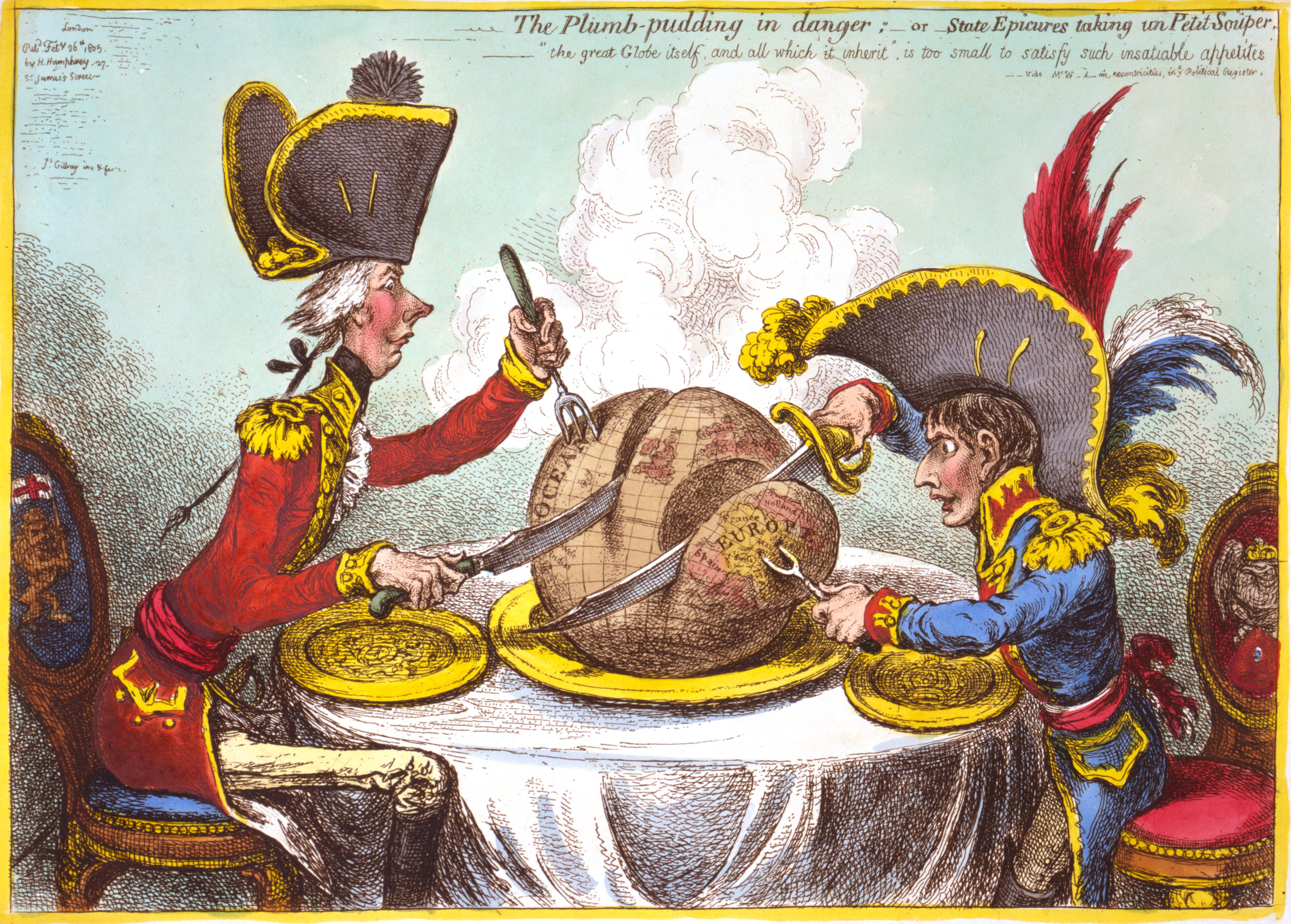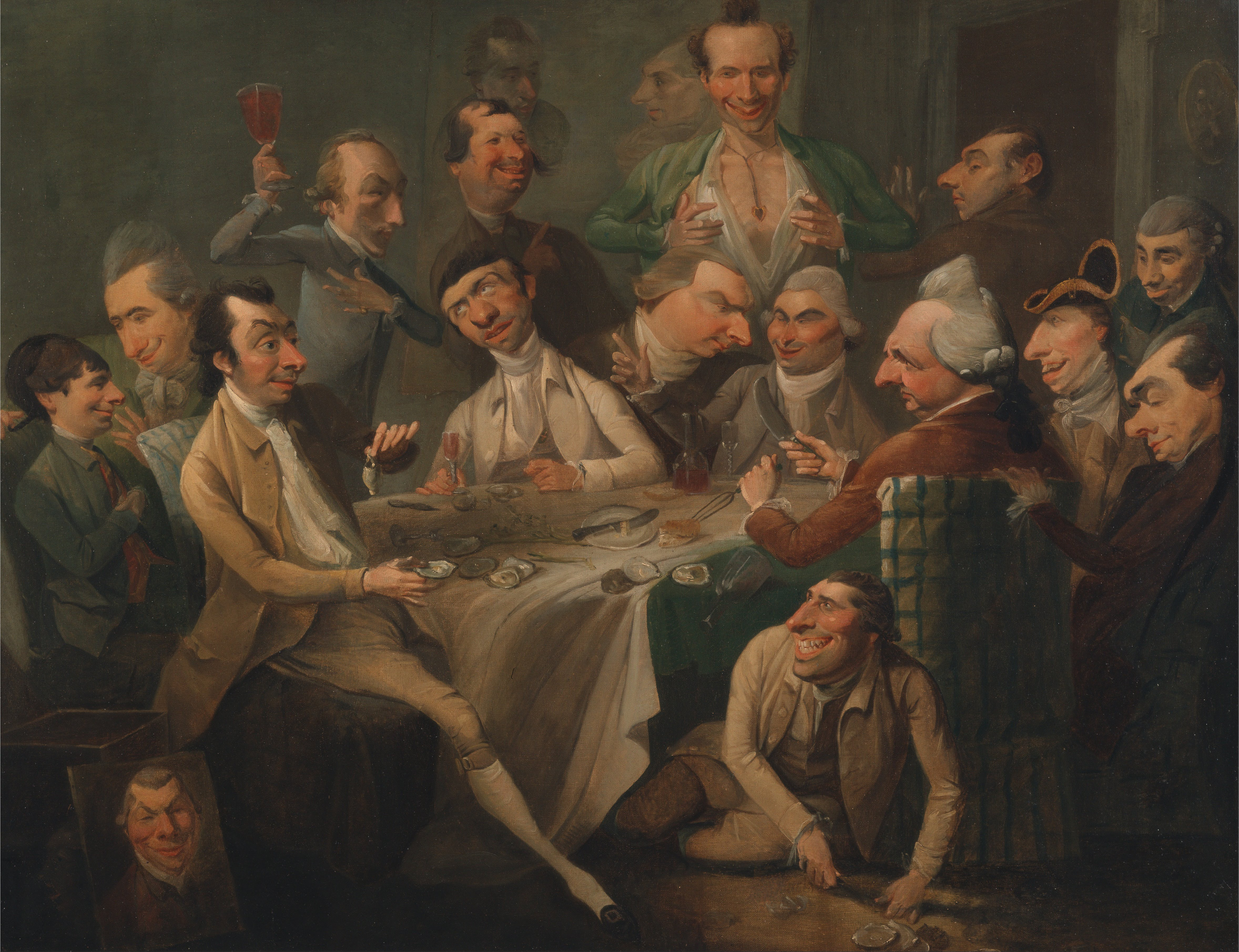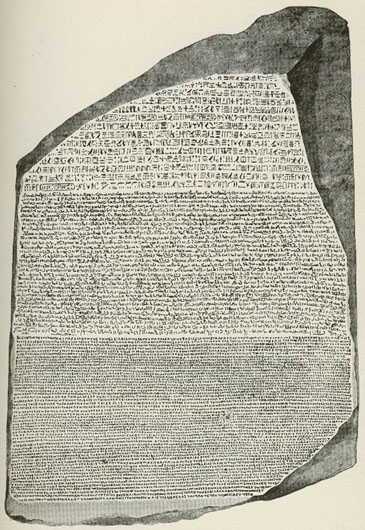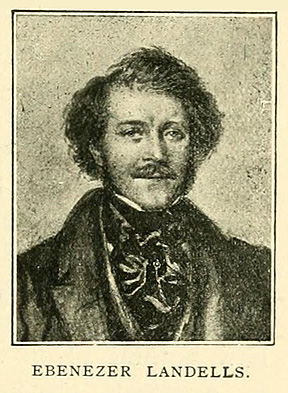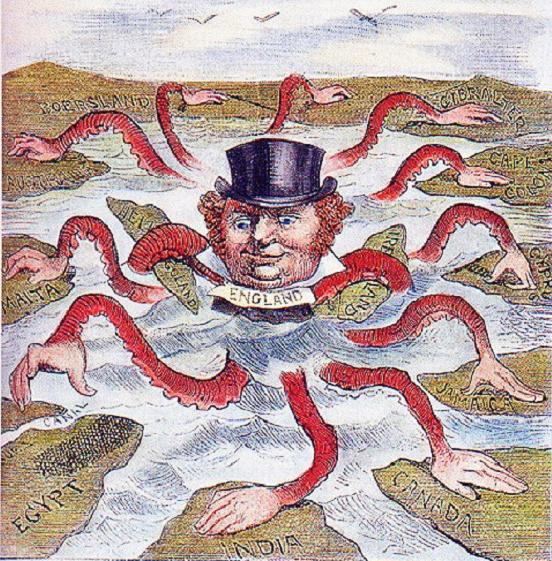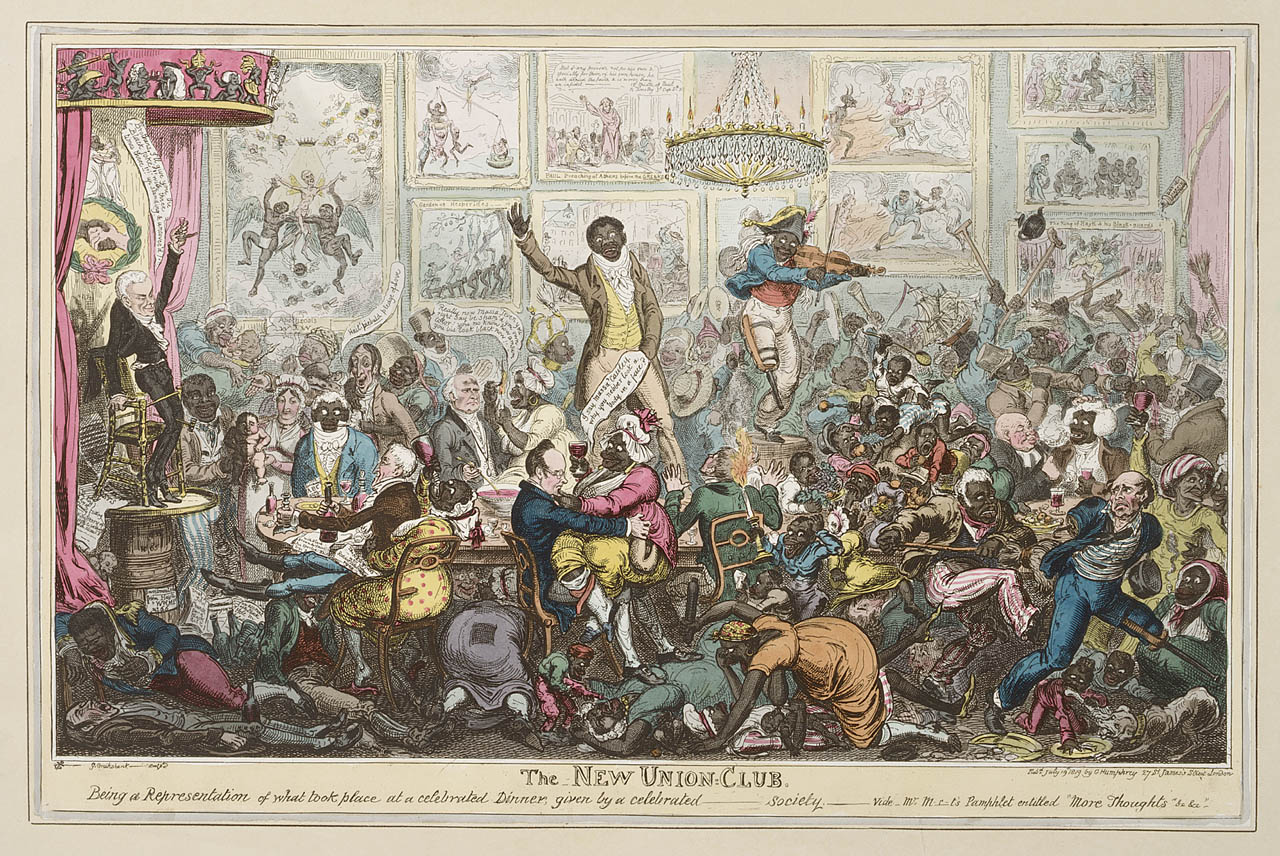|
Editorial Cartoon
A political cartoon, also known as an editorial cartoon, is a cartoon graphic with caricatures of public figures, expressing the artist's opinion. An artist who writes and draws such images is known as an editorial cartoonist. They typically combine artistic skill, hyperbole and satire in order to either question authority or draw attention to corruption, political violence and other social ills. Developed in England in the latter part of the 18th century, the political cartoon was pioneered by James Gillray, although his and others in the flourishing English industry were sold as individual prints in print shops. Founded in 1841, the British periodical ''Punch (magazine), Punch'' appropriated the term ''cartoon'' to refer to its political cartoons, which led to the term's widespread use. History Origins The pictorial satire has been credited as the precursor to the political cartoons in England: John J. Richetti, in ''The Cambridge history of English literature, 1660– ... [...More Info...] [...Related Items...] OR: [Wikipedia] [Google] [Baidu] |
Caricature Gillray Plumpudding
A caricature is a rendered image showing the features of its subject in a simplified or exaggerated way through sketching, pencil strokes, or other artistic drawings (compare to: cartoon). Caricatures can be either insulting or complimentary, and can serve a political purpose, be drawn solely for entertainment, or for a combination of both. Caricatures of politicians are commonly used in newspapers and news magazines as political cartoons, while caricatures of movie stars are often found in entertainment magazines. In literature, a ''caricature'' is a distorted representation of a person in a way that exaggeration, exaggerates some characteristics and oversimplifies others. Etymology The term is derived for the Italian ''caricare''—to charge or load. An early definition occurs in the English doctor Thomas Browne's ''Christian Morals'', published posthumously in 1716. with the footnote: Thus, the word "caricature" essentially means a "loaded portrait". In 18th-centu ... [...More Info...] [...Related Items...] OR: [Wikipedia] [Google] [Baidu] |
Bethlem Royal Hospital
Bethlem Royal Hospital, also known as St Mary Bethlehem, Bethlehem Hospital and Bedlam, is a psychiatric hospital in Bromley, London. Its famous history has inspired several horror books, films, and television series, most notably ''Bedlam (1946 film), Bedlam'', a 1946 film with Boris Karloff. The hospital is part of the South London and Maudsley NHS Foundation Trust. It is closely associated with King's College London and, in partnership with the Institute of Psychiatry, Psychology and Neuroscience, is a major centre for psychiatric research. It is part of the King's Health Partners academic health science centre and the National Institute for Health and Care Research (NIHR) Biomedical Research Centre for Mental Health. Founded in 1247, the hospital was originally located just outside the London Wall, city walls, in the Bishopsgate, Bishopsgate Without area of the City of London. It moved a short distance to Moorfields in 1676, and then to St George's Fields in Southwark in ... [...More Info...] [...Related Items...] OR: [Wikipedia] [Google] [Baidu] |
Encyclopædia Britannica
The is a general knowledge, general-knowledge English-language encyclopaedia. It has been published by Encyclopædia Britannica, Inc. since 1768, although the company has changed ownership seven times. The 2010 version of the 15th edition, which spans 32 volumes and 32,640 pages, was the last printed edition. Since 2016, it has been published exclusively as an online encyclopedia, online encyclopaedia. Printed for 244 years, the ''Britannica'' was the longest-running in-print encyclopaedia in the English language. It was first published between 1768 and 1771 in Edinburgh, Scotland, in three volumes. The encyclopaedia grew in size; the second edition was 10 volumes, and by its fourth edition (1801–1810), it had expanded to 20 volumes. Its rising stature as a scholarly work helped recruit eminent contributors, and the 9th (1875–1889) and Encyclopædia Britannica Eleventh Edition, 11th editions (1911) are landmark encyclopaedias for scholarship and literary ... [...More Info...] [...Related Items...] OR: [Wikipedia] [Google] [Baidu] |
Ebenezer Landells
Ebenezer Landells (Newcastle upon Tyne, Newcastle 13 April 1808 – 1 October 1860 London) was a British wood-engraver, illustrator, and magazine proprietor. Life Born in Newcastle, Landells was apprenticed to the wood-engraver Thomas Bewick. In 1829 he moved to London, and before long managed to start his own engraving workshop. After attempting a short-lived fashion journal, ''Cosmorama'', he joined with the journalist Henry Mayhew and the printer William Last (printer), William Last to found ''Punch (magazine), Punch'' in 1841. Initial difficulties forced Landells to sell his one-third share to the publishers Bradbury & Evans; after the new owners replaced Landells with Joseph Swain (engraver), Joseph Swain as chief engraver, Landells responded with a pamphlet entitled ''A Word with Punch'' (1847). Herbert Ingram consulted Landells about launching his weekly ''Illustrated London News'' in 1842: after a commission to sketch Queen Victoria's first visit to Scotland that y ... [...More Info...] [...Related Items...] OR: [Wikipedia] [Google] [Baidu] |
Henry Mayhew
Henry Mayhew (25 November 1812 – 25 July 1887) was an English journalist, playwright, and advocate of reform. He was one of the co-founders of the satirical magazine '' Punch'' in 1841, and was the magazine's joint editor, with Mark Lemon, in its early days. He is also known for his work as a social researcher, publishing an extensive series of newspaper articles in the '' Morning Chronicle'' that was later compiled into the three-volume book '' London Labour and the London Poor'' (1851), a groundbreaking and influential survey of the city's poor. Biography Early life He was born in London, the thirteenth of 17 children to Joshua Mayhew. He was educated at Westminster School before running away from his studies to the sea. He then served with the East India Company as a midshipman on a ship bound for Calcutta. He returned after several years, in 1829, becoming a trainee lawyer in Wales.Taithe (1996), p. 9. He left this career to become a freelance journalist. He contributed t ... [...More Info...] [...Related Items...] OR: [Wikipedia] [Google] [Baidu] |
Lincoln And Johnsond
Lincoln most commonly refers to: * Abraham Lincoln (1809–1865), the 16th president of the United States * Lincoln, England, cathedral city and county town of Lincolnshire, England * Lincoln, Nebraska, the capital of Nebraska, U.S. * Lincoln (name), a surname and given name * Lincoln Motor Company, a Ford brand Lincoln may also refer to: Places Canada * Lincoln, Alberta * Lincoln, New Brunswick * Lincoln Parish, New Brunswick * Lincoln, Ontario ** Lincoln (federal electoral district) (former), Ontario ** Lincoln (provincial electoral district) (former), Ontario United Kingdom * Lincoln, England ** Lincoln (UK Parliament constituency) United States * Lincoln, Alabama * Lincoln, Arkansas * Lincoln, California, in Placer County * Lincoln, former name of Clinton, California, in Amador County * Lincoln, Delaware * Lincoln, Idaho * Lincoln, Illinois * Lincoln, Indiana * Lincoln, Iowa * Lincoln Center, Kansas * Lincoln Parish, Louisiana * Lincoln, Maine, a New ... [...More Info...] [...Related Items...] OR: [Wikipedia] [Google] [Baidu] |
Taft Crown Prince
William Howard Taft (September 15, 1857March 8, 1930) served as the 27th president of the United States from 1909 to 1913 and the tenth chief justice of the United States from 1921 to 1930. He is the only person to have held both offices. Taft was born in Cincinnati, Ohio. His father, Alphonso Taft, was a U.S. attorney general and secretary of war. Taft attended Yale and joined Skull and Bones, of which his father was a founding member. After becoming a lawyer, Taft was appointed a judge while still in his twenties. He continued a rapid rise, being named solicitor general and a judge of the Sixth Circuit Court of Appeals. In 1901, President William McKinley appointed Taft civilian governor of the Philippines. In 1904, President Theodore Roosevelt made him Secretary of War, and he became Roosevelt's hand-picked successor. Despite his personal ambition to become chief justice, Taft declined repeated offers of appointment to the Supreme Court of the United States, believi ... [...More Info...] [...Related Items...] OR: [Wikipedia] [Google] [Baidu] |
John Bull
John Bull is a national personification of England, especially in political cartoons and similar graphic works. He is usually depicted as a stout, middle-aged, country-dwelling, jolly and matter-of-fact man. He originated in satirical works of the early-18th century and would come to stand for English liberty in opposition to revolutionaries. He was popular through the 18th and 19th centuries until the time of the First World War, when he generally stopped being seen as representative of the "common man". Origin John Bull originated as a satirical character created by John Arbuthnot, a friend of Jonathan Swift and Alexander Pope. Bull first appeared in 1712 in Arbuthnot's pamphlet ''Law is a Bottomless Pit''."AngloMania: Tradition and Transgression in British Fashion," Metropolitan Museum of Art (2006), exhibition brochure, p. 2. The same year Arbuthnot published a four-part political narrative ''The History of John Bull''. In this satirical treatment of the War of the Spanis ... [...More Info...] [...Related Items...] OR: [Wikipedia] [Google] [Baidu] |
George IV Of The United Kingdom
George IV (George Augustus Frederick; 12 August 1762 – 26 June 1830) was King of the United Kingdom of Great Britain and Ireland and King of Hanover from 29 January 1820 until his death in 1830. At the time of his accession to the throne, he was acting as prince regent for his father, King George III, having done so since 5 February 1811 during his father's final mental illness. George IV was the eldest child of King George III and Queen Charlotte. He led an extravagant lifestyle that contributed to the fashions of the Regency era. He was a patron of new forms of leisure, style and taste. He commissioned John Nash to build the Royal Pavilion in Brighton and remodel Buckingham Palace, and commissioned Jeffry Wyatville to rebuild Windsor Castle. George's charm and culture earned him the title "the first gentleman of England", but his dissolute way of life and poor relationships with his parents and his wife, Caroline of Brunswick, earned him the contempt of the pe ... [...More Info...] [...Related Items...] OR: [Wikipedia] [Google] [Baidu] |
George Cruikshank
George Cruikshank or Cruickshank ( ; 27 September 1792 – 1 February 1878) was a British caricaturist and book illustrator, praised as the "modern William Hogarth, Hogarth" during his life. His book illustrations for his friend Charles Dickens, and many other authors, reached an international audience. Early life Cruikshank was born in London. His father, Edinburgh-born Isaac Cruikshank, was one of the leading caricaturists of the late 1790s and Cruikshank started his career as his father's apprentice and assistant. His older brother, Isaac Robert Cruikshank, Isaac Robert, also followed in the family business as a caricaturist and illustrator. Cruikshank's early work was caricature; but in 1823, at the age of 31, he started to focus on book illustration. He illustrated the first, 1823 English translation (by Edgar Taylor (author), Edgar Taylor and David Jardine) of ''Grimms' Fairy Tales'', published in two volumes as ''German Popular Stories''. On 16 October 1827, he married ... [...More Info...] [...Related Items...] OR: [Wikipedia] [Google] [Baidu] |
Napoleon
Napoleon Bonaparte (born Napoleone di Buonaparte; 15 August 1769 – 5 May 1821), later known by his regnal name Napoleon I, was a French general and statesman who rose to prominence during the French Revolution and led Military career of Napoleon, a series of military campaigns across Europe during the French Revolutionary and Napoleonic Wars from 1796 to 1815. He led the French First Republic, French Republic as French Consulate, First Consul from 1799 to 1804, then ruled the First French Empire, French Empire as Emperor of the French from 1804 to 1814, and briefly again in 1815. He was King of Italy, King of Kingdom of Italy (Napoleonic), Italy from 1805 to 1814 and Protector of the Confederation of the Rhine, Protector of the Confederation of the Rhine from 1806 to 1813. Born on the island of Corsica to a family of Italian origin, Napoleon moved to mainland France in 1779 and was commissioned as an officer in the French Royal Army in 1785. He supported the French Rev ... [...More Info...] [...Related Items...] OR: [Wikipedia] [Google] [Baidu] |
George III Of The United Kingdom
George III (George William Frederick; 4 June 173829 January 1820) was King of Great Britain and Ireland from 25 October 1760 until his death in 1820. The Acts of Union 1800 unified Great Britain and Ireland into the United Kingdom of Great Britain and Ireland, with George as its king. He was concurrently Duke and Prince-elector of Hanover in the Holy Roman Empire before becoming King of Hanover on 12 October 1814. He was the first monarch of the House of Hanover who was born in Great Britain, spoke English as his first language, and never visited Hanover. George was born during the reign of his paternal grandfather, King George II, as the first son of Frederick, Prince of Wales, and Princess Augusta of Saxe-Gotha. Following his father's death in 1751, Prince George became heir apparent and Prince of Wales. He succeeded to the throne on George II's death in 1760. The following year, he married Princess Charlotte of Mecklenburg-Strelitz, with whom he had 15 children. G ... [...More Info...] [...Related Items...] OR: [Wikipedia] [Google] [Baidu] |
